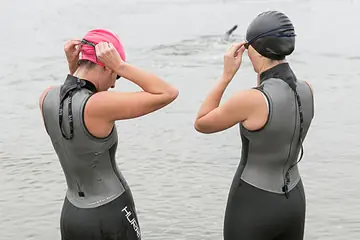
Sometime late in the year, the triathlon season is replaced by the holidays and a calendar filled with races becomes filled with parties and other activities. The days become shorter and the weather turns colder--neither of which is necessarily conducive to maintaining peak physical fitness.
As much as all triathletes would like to stay in top racing shape year-round, this simply isn't realistic. The body, mind and schedule all need a season to recover and refocus. While it can be easy to give up physical activity and gain copious amounts of weight through the winter, this time is better served in preparation for the successful race season to come.
Traditionally, winter training consisted of large volume at an easy pace, or LSD (long slow distance), to build a base of fitness to gain upon later in the year. There is, however, a trend away from this logic--replacing the LSD with short, high-intensity workouts that focus on building speed, power and efficiency.
These off-season gains will have a direct correlation to quicker paces later in the year. You can easily add volume later, which is processed quickly by the body. These shorter sessions are a more efficient use of time while reducing the risk of overuse injuries.
Winter weather often means training indoors. While many triathletes loathe trainers and treadmills, they can be highly effective training tools and several top athletes and coaches incorporate their use year round. Not only can these tools produce highly effective training sessions, they can help improve mental focus as well.
Many triathletes will also masquerade as runners through the winter months. Running is a great way to maintain fitness as well as focus on improved form. Be advised that triathletes should only race half the distance of next season's "A" race. If the athlete's "A" race is an Olympic distance, they should focus on running 5Ks. If the athlete's "A" race is an IRONMAN, they should not exceed a half marathon. This will set up the athlete to race strong as well as stay healthy.
Reduced swim, bike and run workout durations can provide the athlete an opportunity to address any weaknesses, imbalances or injuries that may have interfered with last year's racing. Additionally, the winter months are a great time to begin a strength training regimen, yoga or other cross training activity.
Recent Articles:
- 7 Reasons To Do An IRONMAN In 2016
- Athlete Food: Melissa's Stovetop Fajitas
- Indy 500 Winner Tony Kanaan on Triathlon, Training and Driving
Connect with us on Twitter, Facebook, Instagram or Pinterest for more tips, recipes and ideas to fuel your ACTIVE life.
Looking to gain a competitive edge this triathlon season? The TriDot Triathlon Training System combines your personal biometrics with their database of triathlete performance metrics. Learn more here.
About the Author










Discuss This Article